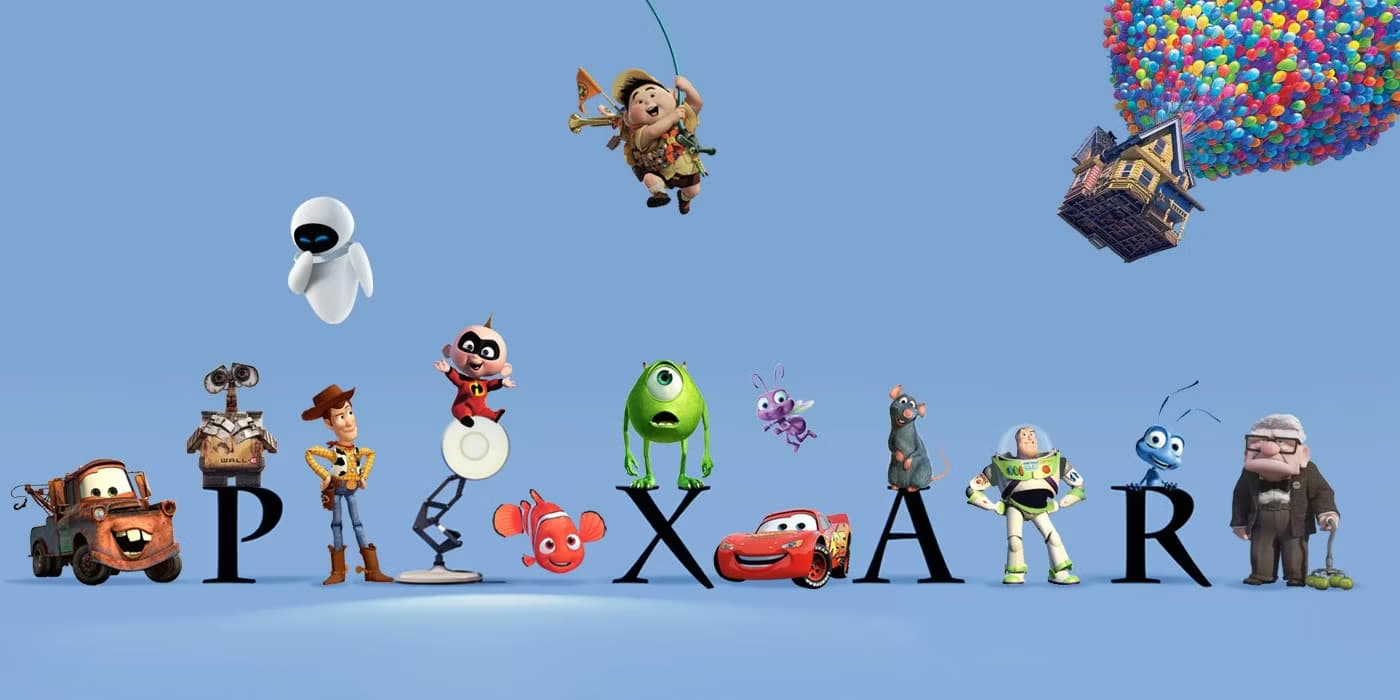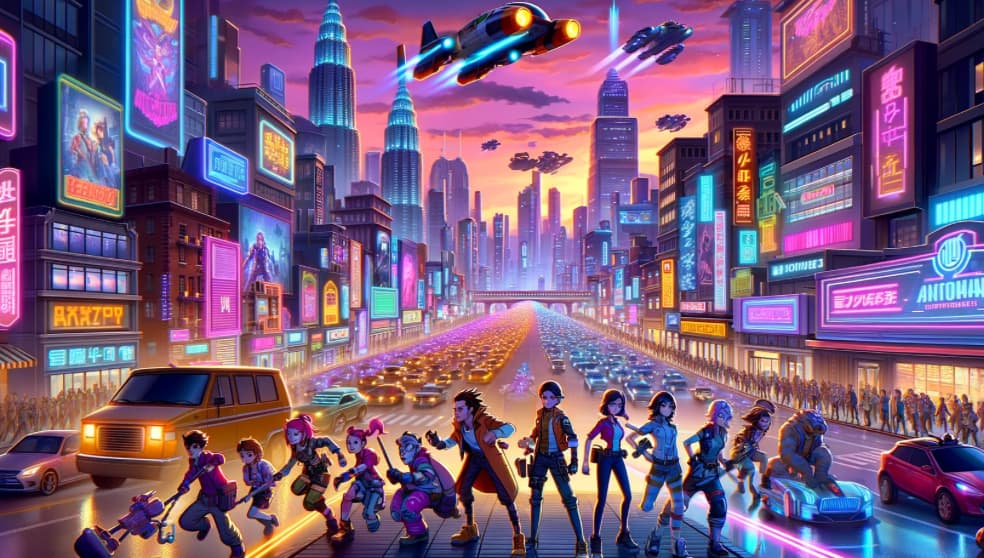But what is it that elevates Pixar above its competitors? Is it the studio’s technologically advanced production methods, its compelling characters that touch hearts, or its unconventional storylines that break stereotypes? Let’s embark on this enlightening journey to comprehend the magic of Pixar, its rise to dominance, and the factors behind its global eminence.
The Spark that Powers Pixar: An Overview
Pixar Animation Studios, a revered name in the realm of animation, originated as a branch of Lucasfilm in 1979, before being acquired by Steve Jobs in 1986. The studio, known for its unmatched mastery in producing computer-animated feature films, evolved into a celebrated trendsetter known for blending innovation with compelling narratives.
Pixar’s impressive portfolio includes unforgettable films like Toy Story, Finding Nemo, Inside Out, The Incredibles, Wall-E, and Up. These features have amassed critical acclaim and commercial success, cementing Pixar’s reputation as a pioneer in the field.
The secret recipe to Pixar’s acclaim is not just the mesmerizing visual experience they offer. It’s their unique approach to creation, marked by a rigorous research and development process, brainstorming assemblies, and a significant focus on collaboration, which breathes life into their unforgettable characters.
In essence, Pixar has positioned itself as an industry leader, celebrated for its avant-garde approach, artistic brilliance, and unmatched ability to create movies that connect with audiences of all ages.
Standing Tall: Is Pixar the Undisputed Leader in Animation?
Pixar’s unique assimilation of cutting-edge technology, heartfelt narratives, and visually striking animation has set an industry benchmark. They have been successful in creating a unique language of animation that resonates with viewers worldwide.
Recounting Pixar’s Trophy Cabinet: Award-Winning Endeavors
What sets Pixar apart is their consistent ability to produce award-winning animations, from pioneering films like Toy Story in 1995 to recent sensations like Soul and Luca. The cornerstone of Pixar’s creative journey is a meticulous story development process, fostering collaboration and iterative refinement.
A key element of this process is the famed “Braintrust,” a committee of experienced Pixar executives and directors who share feedback and guidance on ongoing projects. This team plays a crucial role in shaping narratives that strike a chord with viewers.
Pixar also prides itself on extensive research ensuring the authenticity of their sketches. The team frequently embarks on trips to locations that inspire their films and consult with experts to validate accuracy.
Technological Pioneers and Master Storytellers: Secrets to Success
Pixar’s innovative use of computer animation, exemplified in their early features like Toy Story and A Bug’s Life, set a new industry standard for animated films. The studio’s prowess in pushing technological boundaries allows them to create lifelike characters in vivid environments that immerse audiences in entirely new worlds.
However, Pixar’s impact isn’t solely defined by their technical prowess. Just as distinctive is their knack for storytelling. Their films venture into complex themes, allowing audiences to connect on a deeper level.
The Unforgettable Art of Pixar: What Makes their Films Exceptional?
Pixar’s films are unique in their capacity to present a depth of character development unlike any other, showcasing relatable flaws and ambitions. This capacity to humanize animated characters forms an emotional bond between the viewer and the on-screen personas, making every Pixar story a journey worth taking.
Standing the Test of Time: Five Iconic Pixar Films
Pixar’s movies offer a medley of emotions and experiences. Here are five iconic films that exemplify Pixar’s exceptional storytelling:
- Toy Story: The trailblazing film that redefined animation, introducing us to a world where toys spring to life in the absence of humans. The tale of friendship between toys Woody and Buzz remains an enduring favorite;
- Finding Nemo: A heartwarming tale of a clownfish’s quest to find his lost son, underscored by breath-taking underwater visuals and a compelling narrative;
- The Incredibles: A novel portrayal of a superhero family trying to balance their everyday lives with their secret identities, highlighting the challenges of parenthood and the significance of teamwork;
- Up: An emotional journey of an elderly widower who embarks on a late life adventure, exploring themes of loss, grief, and human connections;
- Inside Out: A creative exploration of the complexity of human emotions through the perspective of a young girl’s mind, delivering a poignant message about emotional acceptance.
Pixar’s Impact on the Animation Industry
Pixar Animation Studios, since its establishment in 1986, has been a beacon of innovation and creativity in the animation industry. With the release of “Toy Story” in 1995, the world’s first fully computer-animated feature film, Pixar not only set a new standard for visual storytelling but also demonstrated the vast, untapped potential of computer animation. This pioneering achievement marked a pivotal moment in animation, showcasing that computer-generated imagery (CGI) could be used for more than just special effects in live-action movies; it could be employed to create entire worlds filled with dynamic, compelling characters entirely from digital environments.
Pixar’s technological advancements have been equally groundbreaking. The studio developed its proprietary software, RenderMan, which has become an industry standard for rendering high-quality, photorealistic images. RenderMan’s capabilities were so advanced that it won an Academy Award for its contributions to the CGI industry. Pixar’s commitment to pushing the boundaries of what its technology can achieve is evident in the gradual improvements in the texture, lighting, and fluidity of movements seen in its characters and environments over the years.
Beyond technology, Pixar has made significant contributions to storytelling within animation. The studio places a strong emphasis on character development and narrative depth, aspects that have allowed animated films to appeal to audiences of all ages. Pixar’s approach to storytelling is characterized by its unique blend of humor, heart, and the exploration of complex themes such as identity, family, and the acceptance of change. This has not only raised the bar for what audiences expect from animated films but has also influenced countless other studios to adopt a more sophisticated approach to storytelling.
The Importance of Pixar in Modern Animation
Pixar’s influence on modern animation extends beyond its technical and narrative innovations. The studio has played a crucial role in changing industry standards, influencing both the production of animated films and audience expectations. Before Pixar’s rise, traditional, hand-drawn animation was the dominant medium. Pixar’s success with CGI led to a seismic shift in the industry, with computer animation becoming the new norm for feature films.
Moreover, Pixar has contributed to changing how animated films are perceived by audiences and critics alike. Previously seen primarily as children’s entertainment, Pixar’s films have demonstrated that animation can tackle universal themes with depth and sophistication, making them relevant to people of all ages. This has led to a broader acceptance and appreciation of animated films as a serious form of art and storytelling.
Pixar has also been instrumental in driving changes in how animated films are produced. The studio’s collaborative culture, where feedback is encouraged at all levels of production, has set new standards for the development process of animated films. This model has inspired other studios to adopt a more inclusive and iterative approach to film-making, leading to higher-quality outputs across the industry.
In addition, Pixar’s achievements have had a significant economic impact on the animation industry, demonstrating the commercial viability of animated films. The studio’s consistent box office success has led to increased investment in animation, allowing for more ambitious projects and the growth of the industry as a whole.
Comparative Table
| Studio Name | Founded | Headquarters | Notable Works | Specialization | Industry Impact |
|---|---|---|---|---|---|
| Pixar Animation Studios | 1986 | Emeryville, California, USA | “Toy Story,” “Finding Nemo,” “Up” | Computer-animated feature films | Pioneered the use of CGI for animated feature films; consistently pushes the boundaries of storytelling and technical excellence. |
| Studio Ghibli | 1985 | Tokyo, Japan | “Spirited Away,” “My Neighbor Totoro,” “Princess Mononoke” | Hand-drawn and computer animation | Renowned for its artistry and storytelling; has profoundly influenced global animation and culture. |
| DreamWorks Animation | 1994 | Glendale, California, USA | “Shrek,” “Madagascar,” “How to Train Your Dragon” | Computer-animated feature films | Known for creating detailed animation and engaging, humorous stories that appeal to both children and adults. |
| Walt Disney Animation Studios | 1923 | Burbank, California, USA | “Snow White and the Seven Dwarfs,” “The Lion King,” “Frozen” | Traditional and computer animation | As the most venerable studio, it has set standards for animation and storytelling, pioneering many technological and narrative techniques. |
| Illumination Entertainment | 2007 | Santa Monica, California, USA & Paris, France | “Despicable Me,” “Minions,” “The Secret Life of Pets” | Computer-animated feature films | Known for creating compelling characters and franchises that have achieved significant commercial success. |
| Nickelodeon Animation Studio | 1991 | Burbank, California, USA | “SpongeBob SquarePants,” “Avatar: The Last Airbender,” “Dora the Explorer” | Television animation | Has produced a wide array of influential and beloved children’s programming, with a significant impact on American culture. |
| Warner Bros. Animation | 1980 | Burbank, California, USA | “Looney Tunes,” “Batman: The Animated Series,” “Teen Titans” | Traditional and computer animation | Continues the legacy of Warner Bros.’ classic cartoons with modern series and films, maintaining a strong presence in television and direct-to-video markets. |
| Laika | 2005 | Hillsboro, Oregon, USA | “Coraline,” “ParaNorman,” “Kubo and the Two Strings” | Stop-motion feature films | Known for its dark, intricate narratives and innovative use of stop-motion technology, blending it with CGI elements. |
Video Guide
To answer all your questions, we have prepared a video for you. Enjoy watching it!
Conclusion
In conclusion, Pixar’s innovation, grit, and storytelling brilliance have not only made it a household name but a marker of excellence in the animation field. It’s their consistent commitment to create imaginative, heartwarming stories rooted in authenticity and relatability that keeps us eagerly waiting for what they stitch together next.



